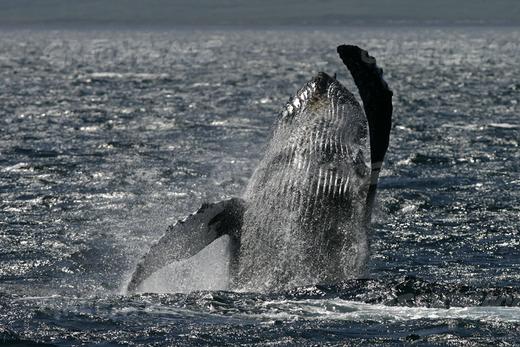Not long ago, there was a time in my life when I lost faith that the little guys could do something to make a difference. That was before I worked for Greenpeace.
Two weeks before the writing of this blog, I was lucky enough to travel to San Luis Obispo, California in order to spread the word about our Greenpeace movement and sign up new members to join our cause. I was excited, because I had heard that these travel trips were a great way to meet new people and to sharpen my own personal skills as an activist. What could be better? What I found was something completely beyond what I expected. On a Friday morning in front of a Trader Joe’s exit door, I was asked a question that would forever change my life:
“What are you doing about Diablo Canyon?”
I had no response. “I’m sorry, what?” was all I could muster.
“What is Greenpeace doing about Diablo Canyon?”
Still, I wasn’t following the question. “I don’t know anything about Diablo Canyon. Can you tell me about it?” I asked.
What followed was an education about a nuclear-power plant in the local area that was planning to map the ocean floor using sonar pulses in search of earthquake prone fault lines. Diablo Canyon rests on the confluence of six different fault lines. A nuclear facility built on faults? Come on, this can’t be for real, especially after what happened in Japan. I wish I was blowing smoke, but I’m afraid that I’m serious.
In an effort to renew the permits required to operate this facility, Diablo Canyon is planning to map the ocean floor using sonar pulses. These sonar pulses will be sent out into the water surrounding the plant, bouncing off whatever they encounter and returning measurements that will indicate how “safe” this facility is to operate. Regardless of the readings obtained from these exercises, there will be blood. As you read this post, blue whales and humpback whales are migrating through the waters near San Luis Obispo and feeding on the plentiful populations of krill present this time of year.
If you remember anything from science class in grade school, you’ll recall that whales and dolphins communicate and navigate using sonar. Imagine for a second what these tests will do to our marine mammal brothers and sisters whose sensitivity to sound waves is exponentially beyond our own. If you’d rather not imagine this, please stop reading right now.
Dolphins’ eyes will burst and bleed. Whales will become confused as their ear drums rupture from the pressure. What these conscious animals will endure accounts to nothing less than torture. The lucky ones in all of this are the smaller marine life forms that will simply be killed immediately from the sonar testing. It will be a small mercy that they won’t have to suffocate on the sandy beaches while volunteers douse them with fresh water and stroke their rubbery skin. At least they won’t be made to suffer.
Three months ago, I would have read a blog post similar to this and thought what I was reading was terrible and that I sure hope there’s someone out there stopping this. When I began to work for Greenpeace, I realized that I am someone. I am a person with a voice, and if I speak up when the issue requires it, my voice can have a difference. When my colleagues and I returned from our trip on a Tuesday, we immediately brought up Diablo Canyon with our higher-ups. On Wednesday, we brought the situation to larger attention with our coworkers and were comforted to know that there were others who cared about what we were saying. On Friday, I learned that the Greenpeace Oceans Team were holding meetings about this gross atrocity in Washington, D.C.
Three days. Tuesday to Friday. Three days.
That’s all it took for word to reach the Frontlines of Greenpeace to the top brass. A few days after that we were officially taking a stance on this issue and lending our 41 years of expertise on the environment to help our allies do the right thing. The last week has restored my faith in humanity and that the will to do good will always outlast the will to further any other force, whether it be profit alone or mundane forces such as selfishness or apathy.
There is a humpback whale in the Pacific Ocean that will still be there tomorrow because we chose to raise our voices and stand up for what is right. There is nothing more beautiful or more important than that.
Our fight never ends and we know that every victory is just a learning opportunity for the next battle.
Save these beautiful creatures from needless seismic testing in the Pacific Ocean.
For live updates, visit the Stop the Diablo Canyon Seismic Testing Facebook page.




